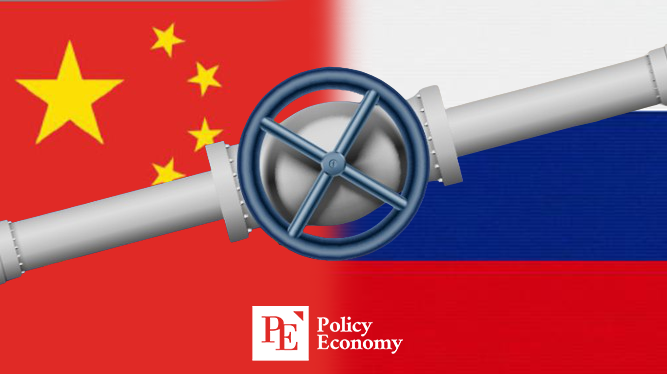[동아시아포럼] 일본의 역사적인 국방예산 증액 투쟁
일본 국방 증강 프로그램 갱신, 5년간 방위비 43조 엔·27년 국방예산 GDP 2% 전망 특별법 통과시켜 세외수입 등으로 재원 마련 예정이지만 안정적이지 못해 세금 인상? 차입금 증액? 재무성은 채권 활용 회의적이지만 세금 인상 반대 목소리도 높아
[동아시아포럼]은 EAST ASIA FORUM에서 전하는 동아시아 정책 동향을 담았습니다. EAST ASIA FORUM은 오스트레일리아 국립대학교(Australia National University)의 크로퍼드 공공정책 학교(Crawford School of Public Policy) 산하의 공공정책과 관련된 정치, 경제, 비즈니스, 법률, 안보, 국제관계 및 사회에 대한 분석 및 연구를 위한 플랫폼입니다.
저희 폴리시코리아(The Policy Korea)와 영어 원문 공개 조건으로 콘텐츠 제휴가 진행 중입니다.
일본 정부는 2023년 국방예산을 2022년보다 무려 26.3% 증가한 6조8,200억 엔으로 책정했습니다. 일본의 국방예산은 아베 신조 전 총리의 재임 기간에도 5조3,000억 엔까지 꾸준히 늘었지만, 총예산의 5~5.2% 수준이었습니다. 하지만 기시다 후미오 총리는 이를 5.9%로 끌어올렸습니다.

업데이트된 국방 증강 프로그램(Defense Build-up Program)에 따르면 일본은 향후 신규 계약에 7조600억 엔을 지출하게 됩니다. 일본은 보통 프로그램이 시작되는 해에 최대한 많은 계약을 체결하는데, 방산 품목의 경우 조달까지 몇 년이 걸리기 때문입니다. 일본 회계연도가 시작된 지 한 달이 지난 2023년 5월 현재 일본 정부는 미쓰비시중공업과 12식 지대함 미사일의 개량 및 양산을 위해 3,800억 엔 규모의 계약을 체결했고, 미국과는 토마호크 순항미사일 최대 400발을 구매하는 1,104억 엔 규모의 계약을 맺었습니다.
아울러 앞으로 5년 동안 일본은 방위비로 43조 엔을 쓰게 됩니다. 2027년 국방예산은 일본 국내총생산(GDP)의 2%에 이르는 9조 엔이 될 전망인데, 그렇게 되면 일본은 세계에서 세 번째로 많은 군비를 지출하는 국가가 됩니다.
미국 정부는 일본의 이러한 노력을 환영한다는 뜻을 밝혔습니다. 더 많은 것을 요구하는 목소리도 나오고 있죠. 하지만 기시다 총리는 ‘지갑’과 ‘총알’의 균형을 신중하게 맞추고 있습니다.
기시다 정부는 새롭게 증액된 국방비를 충당하고자 2023년 회계연도의 재정 흑자, 지출 삭감, 세외 수입에서 4조8,000억 엔을 짜냈습니다. 이 금액 중 1조4,000억 엔은 2023년 예산에 할당됐고, 남은 3조4,000억 엔은 향후 4년간의 지출을 위해 유보됐습니다.
하지만 일본 정부의 예산은 단일 회계연도로 운영되기에 미래를 위한 저축이란 개념이 없습니다. 따라서 일본 정부는 ‘일본 방위력의 발본적인 강화 등을 위해 필요한 재원 확보에 관한 특별조치법안’을 마련했는데, 이 법안이 통과되면 일본 정부는 국방력 강화 기금을 설립, 세외 수입 등으로 앞으로의 국방비 지출을 위한 재원을 마련할 수 있게 됩니다.
일본 재무성은 현재의 조건에서 국방예산을 충당하고자 최선을 다하고 있지만, 쉽지는 않습니다. 일본 재정법에 따르면 매 회계연도의 예산 흑자액 절반은 국채 상환에, 나머지 반은 다음 회계연도의 추경에 쓰여야 합니다. 최근 코로나19 긴급자금 등에서 불용액이 발생하며 흑자 규모가 늘어나기는 했지만, 일부러 흑자를 내기 위해 불필요한 예산을 배정할 명분은 없습니다.
지출 삭감은 앞으로도 쉽지 않을 전망입니다. 고령화와 사회복지지출 증가 때문입니다. 기시다 총리는 아동 부문 예산을 두 배로 증액하겠다는 약속을 하기도 했습니다.
지난해에는 엔화 약세와 외화금리 인상으로 세외 수입 중 하나인 외환기금이 흑자를 기록했지만, 외환기금의 목적이 외환 변동성 피해를 줄이는 것인 만큼 그 흑자액 전부를 국방예산 증액에 쓸 수는 없습니다. 재정 투자 및 대출 프로그램이나 정부 자산의 자본화를 비롯한 기타 비과세 수입 역시 안정적이지 못합니다.
방위비 지출 문제는 집권 여당인 자민당 내에서도 논란거리입니다. 소위 ‘세금 인상파’와 ‘부채 융자파’가 꾸준히 대립하고 있죠. 지난해 12월 기시다 내각은 세금 인상을 통해 국방예산 증액 규모의 4분의 1을 충당한다고 발표했습니다. 증세를 비판하고 국채를 추가로 발행해야 한다는 의견을 내세우던 자민당 정치인들은 해당 결정에 반발했죠. 하기우다 고이치 자민당 정책연구회 의장은 정부가 과세를 논의하기 전에 비과세 수단을 찾는 데 최선을 다해야 한다고 말했습니다.
아오야마 시게하루 자민당 의원 역시 국방예산 증세는 정당하지 않다며 국방은 국가의 책임이지 수혜자의 책임이 아니라고 주장했습니다. 또한 세수가 안정적인 수입원이라는 정부의 주장은 경제 상황의 영향을 무시한 것이라고도 덧붙였습니다. 이들을 비롯한 세금 인상 반대파는 국채를 활용해 국방력을 증강해야 한다고 주장합니다. 그간 일본 해상보안청 조선소 건설에 사용됐던 건설채권처럼 말입니다.
일본 정부는 이들의 의견을 어느 정도 받아들여 방위성 및 자위대 시설 건립을 위해 2,454억 엔, 조선을 위해 1,888억 엔 규모의 건설채권을 발행하는 것을 잠정 승인했습니다. 하지만 이는 5년간의 방위비 43조 엔의 1%에 불과하죠. 다른 정치인들은 아베 전 총리가 타계 전 제안한 기부금 모금, 국채 상환기간 폐지, 국방채 발행 등 추가적인 재원 마련 방안을 구상하고 있습니다. 하지만 일본 재무성은 여전히 채권 활용에 회의적이고, 스즈키 슌이치 일본 재무장관 또한 이러한 조치에 신중히 접근하고 있습니다.
필요한 자금을 제대로 조달하지 못한다면 일본 정부에게는 두 가지 선택지가 주어집니다. 하나는 자위대 시설 건설을 위한 공채 적용 범위를 확대하고 국방력 증강을 위한 국방채를 발행하는 식으로 차입금을 늘리는 것이고, 다른 하나는 세금을 인상하는 것입니다. 전자라면 높은 인플레이션에 대응할 수 있을 만큼 탄력적인 경제를 만들어야 하고, 후자라면 경제성장 둔화 가능성에 대비해야 하죠. 일본의 전체 국채 중 절반가량을 보유하고 있는 일본은행이 어떤 통화정책을 선택할지도 관건입니다.
방위비 지출 규모와 자위대의 역량에 대한 논의도 중요하지만, 학자들은 일본의 경제 상황과 방위 정책 간의 관계를 꾸준히, 그리고 면밀하게 지켜봐야 합니다.
Fighting to fund Japan’s historic defence budget increase
Japanese Prime Minister Fumio Kishida’s administration dramatically increased Japan’s 2023 defence budget by 26.3 per cent in 2022 to 6.82 trillion yen (US$52 billion). During former prime minister Shinzo Abe’s leadership, the defence budget steadily increased to 5.3 trillion yen (US$39 billion) but stayed between 5–5.2 per cent of the whole government budget. Kishida has now increased the defence budget to 5.9 per cent.
Future obligations concerning new contracts for the updated Defense Build-up Program amount to 7.06 trillion yen (US$52 billion). As procurement takes several years, Japan is making as many contracts as possible in the first year of the program to deliver equipment to the Self-Defense Force (SDF) units swiftly. As of May 2023, a month from the start of the Japanese financial year, the government had already announced a 380 billion yen (US$2.8 billion) contract with Mitsubishi Heavy Industries to upgrade and mass-produce Type-12 surface-to-ship missiles. The government also signed a 110.4 billion yen (US$816 million) contract with the United States to purchase 400 Tomahawk cruise missiles.
In the next five years, Japan plans to spend 43 trillion yen (US$330 billion) on defence. In 2027, the defence budget will reach 9 trillion yen (US$66 billion), equivalent to 2 per cent of Japan’s gross domestic product (GDP) in 2023. Though this means that Japan might not achieve its 2 per cent GDP goal in 2027, Japan is poised to become the third-largest military spender in the world.
Internationally, US President Joe Biden’s administration welcomes such Japanese efforts, and there are already voices requesting more. But domestically Kishida is carefully balancing Japan’s wallet and bullets.
To cover the new defence spending increases, the Kishida administration squeezed 4.8 trillion yen (US$35 billion) out of the 2023 financial surplus, spending cuts and non-tax revenues in the 2023 financial year. Out of these 4.8 trillion yen, 1.4 trillion yen (US$10.3 billion) were allocated to the 2023 budget and the other 3.4 trillion yen (US$25 billion) are being saved for spending over the next four years.
The Japanese government runs on a single fiscal year basis, which is incompatible with saving money for the future. Hence the government is trying to pass a ‘bill on special measures for securing financial resources for the substantial reinforcement of Japan’s defence capabilities’. With this legislation, the government is now able to establish a Defence Reinforcement Fund, which will pool non-tax revenues for future defence spending.
While the Ministry of Finance does its best to fund the defence budget within its rights, it cannot be said that these revenue sources are reliable. The Public Finance Law requires that at least half of the budget surplus in each fiscal year be allocated for the redemption of government bonds and the remainder has traditionally been used to finance the following year’s supplementary budget. While the budgetary surplus has increased recently due to the unused emergency COVID-19 fund, there is no justification to appropriate unnecessary items to intentionally make a surplus.
Spending cuts will get harder due to ageing society and increasing social welfare spending. Kishida also promises to double the child-related budget. One of the government’s non-tax revenue sources, the Foreign Exchange Fund, recorded a surplus because of the depreciation of the yen last year and the increasing interest rates in foreign currencies. Still, as this account’s purpose is to buffer the damage of volatility in foreign exchange, it is not guaranteed to increase the defence budget. Other non-tax revenues, including the Fiscal Investment and Loan Program or capitalising government properties, are also unsustainable.
The funding of defence expenditures has caused an ongoing struggle between the tax hike faction and the debt financing faction within Kishida’s ruling Liberal Democratic Party (LDP). In December 2022, the Kishida administration announced that it mobilised one-quarter of the defence budget increases from newly raised taxes following the Ministry of Finance line. This announcement frustrated LDP politicians who have criticised tax hikes and instead called to issue additional national bonds. Chairman of the LDP Policy Research Council Koichi Hagiuda said that the government has to do its best to find non-tax means before discussing taxation.
LDP Politician Shigeharu Aoyama also argued that a tax hike for the defence budget is not justifiable, saying that national defence is the responsibility of the state, not a beneficiary liability. Aoyama also dismissed the government’s labelling of tax revenue as a stable source of income, saying that it is heavily affected by economic circumstances. The anti-tax hike faction insists on using government bonds for defence build-up, including construction bonds, which have been used for Japan Coast Guard shipbuilding.
Answering these demands, the government has provisionally approved using construction bonds for defence, including 245.4 billion yen (US$1.8 billion) for Ministry of Defense and SDF facilities and 188.8 billion yen (US$1.4 billion) for shipbuilding. But this is still only 1 per cent of the 43 trillion yen (US$330 billion). Other politicians have several ideas to source funds, such as accepting donations, removing the redemption period of the national debt and issuing defence bonds, which Abe suggested before his passing. Still, Minister for Finance Shunichi Suzuki is cautious of these measures, and the Ministry of Finance remains hesitant to rely on bonds.
The government may have to choose between raising tax or debt financing, which includes expanding the coverage of construction bonds for more SDF facilities or issuing historic defence bonds for its defence build-up if it cannot mobilise the necessary capital as planned. While the Japanese government has to make its economy resilient against higher inflation rates in the case of debt financing, it must also accomplish economic growth in the case of a tax hike. The monetary policies of the Bank of Japan, which already holds almost half of all government-issued bonds, may also be the key.
While the discussion on defence spending figures and SDF capabilities remains important, scholars must also continue to closely monitor the relationship between Japan’s economic situation and defence policies.



























